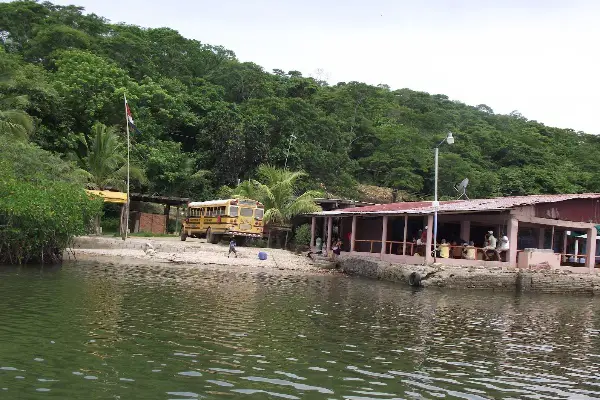Explore the unknown of the Islands and Wetlands of Costa Rica. If you are looking for an adventure and not the kind that you find in a Jurassic park or a city, then you are definitely in the right place. Believe it or not, the Costa Rican islands do not have dinosaurs, but they do have countless other plants and wildlife.
Do not miss these wonderful islands and dare to experience all the enjoyment of these paradisiacal and exotic beauties. In general, when we talk about islands in our country, the first thing we think of is Isla del Coco, Isla Tortuga, San Lucas or Isla Chira. But did you know that our beautiful country has more than 100 islands? Surprising right? And what if we tell you that many of these islands also have great natural treasures and activities to enjoy with your family, friends, partner or even to go on a solo tour.
Calero Island.
Calero Island is a continental island of Costa Rica located in the extreme northeast of this country, limited to the north by the Portillos Island, to the west and southwest by the channels of the San Juan River and the Colorado River, to the south by the Caño Bravo del Río Colorado (which separates it from Isla Brava) and to the east by the Caribbean Sea. It has an area of 15,160 hectares (equivalent to 151.6 km²), and administratively it is part of the Colorado district, in the Pococí canton of the Costa Rican province of Limón.
Calero Island is part of three important natural conservation areas: the Barra del Colorado National Wildlife Refuge, the Northeast Caribbean Wetland and the Costa Rica-Nicaragua Border Biological Corridor.
The Barra del Colorado National Wildlife Refuge is the largest natural wildlife refuge in Costa Rica (75,309.8 ha), and stands out, among others, for the presence of several species of animals in danger of extinction such as the Antillean manatee, the tapir, the jaguar, the Gaspar fish, and the green macaw, in addition to the fact that its beaches are the spawning grounds of the three types of sea turtles that inhabit the Atlantic Ocean (leatherback, in danger of extinction, hawksbill and green). It is considered one of the areas of greatest biodiversity in Costa Rica.
The Northeast Caribbean Wetland is an important national and international protected mangrove area, necessary for the preservation of water resources and the feeding and reproduction of 343 species of fish, 136 species of mollusks, 642 species of plants (58 of which are endemic) and large number of species of aquatic and migratory birds. This wetland encompasses the Tortuguero National Park (23,903 hectares), the Barra del Colorado National Wildlife Refuge (40,315.1 hectares) and the Costa Rica-Nicaragua Border Refuge (11,091.7 hectares) and extends both in the marine area and on the mainland. It is also a site protected by the Ramsar Convention on wetlands, ratified by the governments of Costa Rica and Nicaragua in 1991 and 1997.
The Costa Rica – Nicaragua Border Biological Corridor is an extensive natural area 2000 m wide, part of the Mesoamerican Biological Corridor, which extends along the border of the two countries, from Salinas Bay in the Pacific, to the bay from San Juan del Norte on the Atlantic, which naturally connects the Guanacaste Conservation Area, the Tortuguero National Park, the Barra del Colorado National Wildlife Refuge, the Caño Negro National Wildlife Refuge, all in Costa Rica, with the Indio-Maíz Biological Reserve, the Punta Gorda Nature Reserve, the Cerro Silva Nature Reserve, the Inmaculada Concepción de María Fortress Historical Monument and the Río San Juan Wildlife Refuge, in southeastern Nicaragua.
This wide corridor includes, among others, the San Juan riverbed, the Los Guatuzos natural refuge, the Tamborcito, Maquenque and Northeast Caribbean wetlands, the El Jardín and La Cureña forest reserves, and the Calero and Brava Islands.

Chira Island
Located on this island in the Pacific, in the province of Puntarenas, at the upper end of the Gulf of Nicoya, also known as Nancita. It is the largest island and is inhabited by about 3,000 humble people, most of them are fishermen and people who work in the salt flats, where salt is extracted from the sea.

